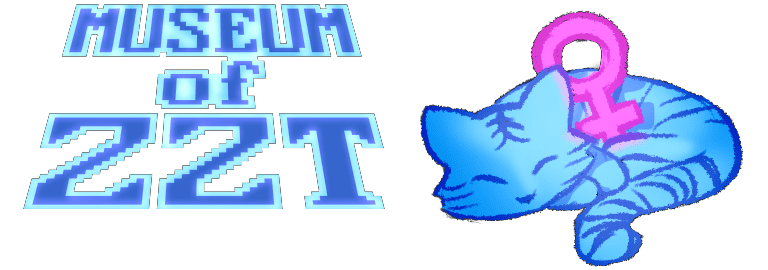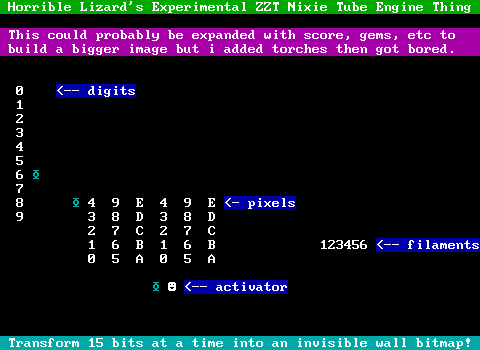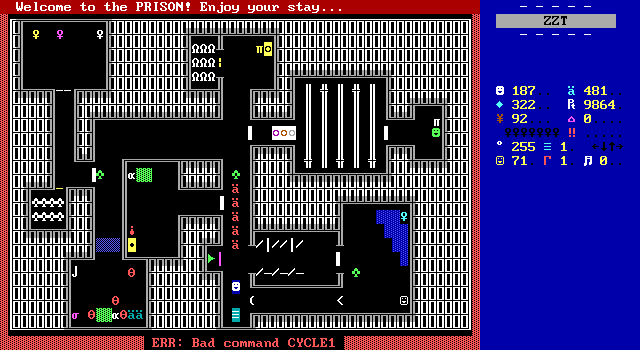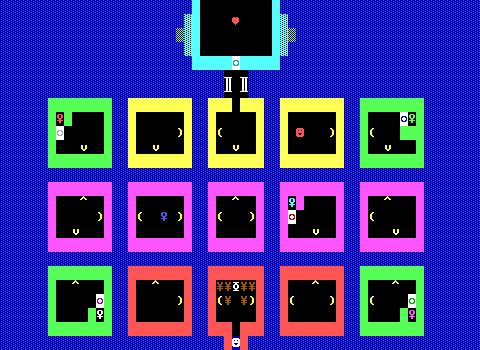
Then it's right back to the essentials, with another maze. This time, it's in transporter form, alleviating the tedium with quick zips around the board that make things a lot more entertaining. Still, there's nothing at all here except for keys and doors.
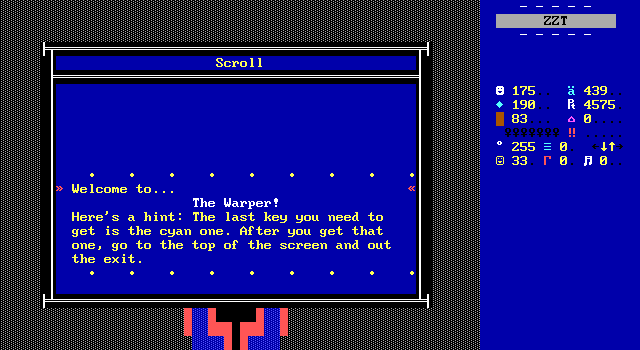
There's a helpful note at the start that reveals the final key you need to collect. In practice, having this knowledge in advance isn't really anything that wouldn't be discovered soon enough anyway. Hewer does this a few more times throughout the game, and it's always with good intentions, but I don't think there's ever an instance where players would still be trying to locate the exit before they got the key to it.
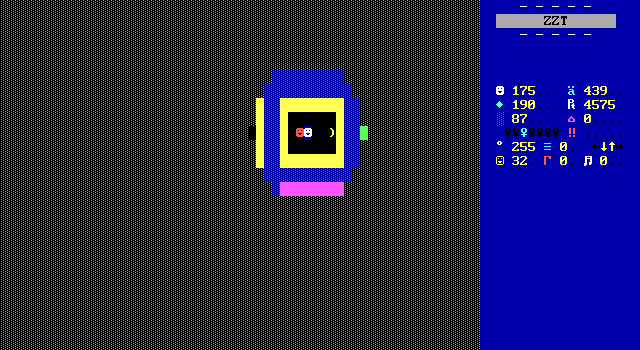
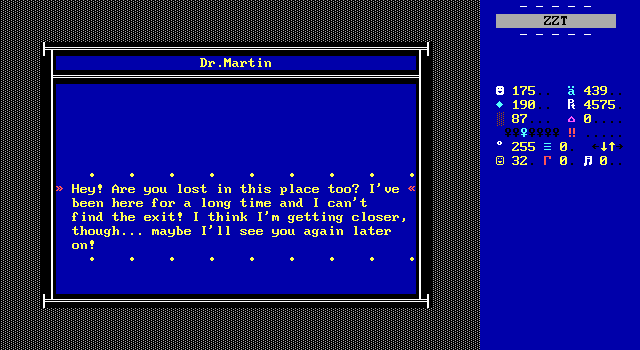
One unique feature for the board is a single room with another character named Dr. Martin that's also lost in the maze. I did manage to almost finish the maze before wandering into his cell, so I can't say it's impossible for players to miss the guy. I'm surprised he didn't provide one of the keys himself to ensure players meet him, even if this first meeting is pretty inconsequential.
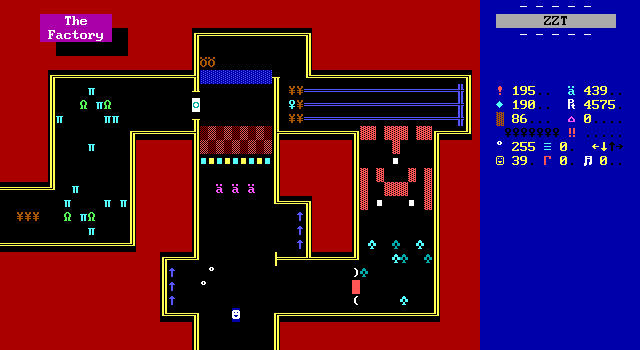
The Factory takes the bit of a slump the game has fallen into and quickly turns things around. It may actually be my favorite board of the game.
Getting past the first set of guns and through the transporter to the next section seems easy enough, until you find the ruffians blocking the exit and bullets headed your way. You're forced to dance around on the outside hoping for a safe moment, or else have to take the risk of diving in guns blazing.
Being careful with your movements afterwards is a chance to block off the blink walls with boulders, but there's more to it than that. Thanks to the items at the end, players can get away with using a single boulder to block the bottom row and reach the key safely.
You then get to shoot some breakables from the other side of water. This combination of water, breakable, and boulders barricading the breakables from one side is a really clever combination that forces players to tackle the arrangement from each side.
If you save any boulders, you can then use them on the way back to block some of the guns, eventually reaching the large row of boulders where you can opt to block of the rest or press forward. The time it takes to block them makes it less appealing to do, but the board does have re-enter when zapped turned on, so if those tigers on beyond the final door aren't particularly cooperative, you'll be thankful to have the spinning guns neutralized.
The way this board has so many little pieces that all manage to play off one another really makes a deceptively simple screen (I thought it was just another homage, this time to Path to castle) into something that feels expertly crafted. It's an action board where "action" isn't just a synonym for shooting! Incredible work here.
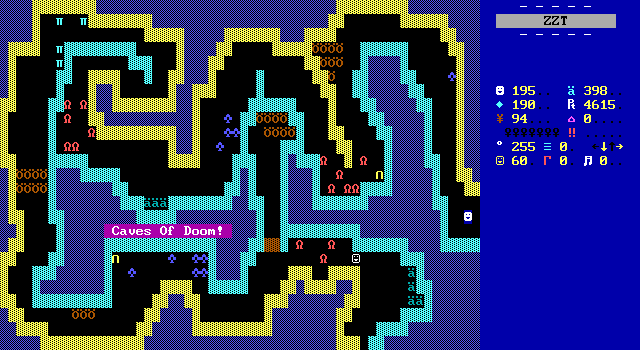
That highlight of a board is followed by something much more basic. Not that that's a bad thing! These unexpectedly well lit caves are just another action gauntlet to get players from point A to point B. The twisting path keeps enemies from reaching players too early, and the narrowness of it all means that when the shooting begins, it's going to be pretty thorough.
Which helps with the surprise at the end. A guard blocks the exit until all the enemies on the board are defeated. This will almost certainly not be a problem, except for maybe the bears just before that are on the other side of some forest tiles with no reason for players to go there otherwise.
The board runs a risk that players might have left something behind, which would make for a miserable hike back. I avoided it, and while I do think it would be unlikely for players to encounter it, I feel like it's a risk worth addressing. Perhaps a shortcut through the last section of bears that can only be opened from their side would make it a lot easier for players to go back to a stray bear that wasn't worth the ammo.
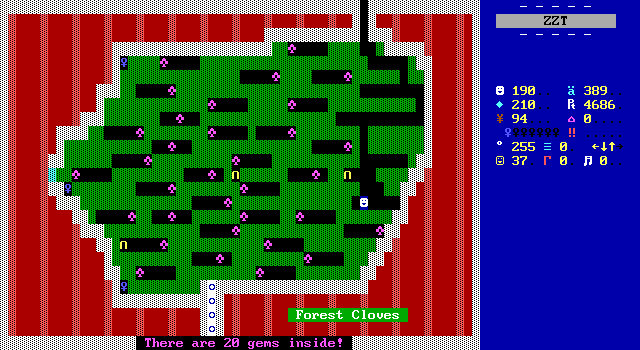
Now, if you want good enemy placement, look no further than the Forest Cloves. Immediately you know what you're in for with this board, popping into a pocket with a lone ruffian, taking your shot, and then heading to the next one while stepping carefully to not break open a seal without room to shoot comfortably.
It's another board where Hewer has found a very effective combination of a few basic ZZT elements. It just goes on a little too long. The forest is another board where all the keys you need are identical which means a lot of extra trips. The walk isn't so bad, once some ruffians are cleared out players can trample forest with reckless abandon. The issue is more that the ruffian shooting gets kind of old. You open a section up from the edge and shoot knowing it will land. Then you do it again. And again. And again.
Oh, and the curtains are red. ...but you probably noticed the glaring cyan fake first.
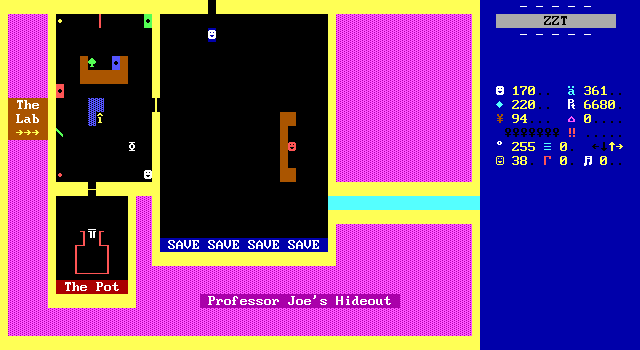
Professor Joe!
I don't know who this guy is, but his hideout is undoubtedly the most unusual board in the game. This is such a departure from everything seen up to this point which has been very official-world-coded. This one is an object driven puzzle board, based around the professor's odd request.
He wants an invisibility potion, and for whatever reason wants this person who just opened the five doors to his hideout to be the one to make it. This involves gathering ingredients and following instructions to properly mix them in the pot, before serving your tasty beverage.
There are a few miscellaneous items scattered about that are entirely decorative. For the puzzle, the only thing that's relevant are the red green and blue cabinets along with a book of spells that contains a few unavailable joke recipes like curing baldness as well as the instructions needed to brew the requested potion.
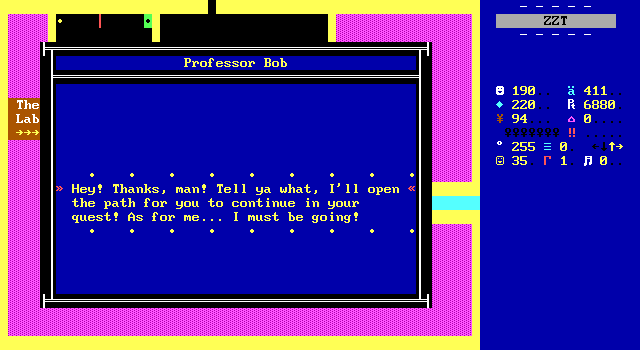
It's a neat idea and more involved than the break than the banana tree. Still it suffers from being effortlessly easy. The book with the answer is right there ready to consult as often as needed. To fail, you'd not only have to refuse to refer to the book again, but also read it wrong, as the solution is as simple as "1 green 2 red 3 blue. Cook at 100 degrees". You can remember that for 20 seconds.
This has the beginnings of something like the herb mixing puzzle in Jami's Undercity, which splits things up into identifying herbs, combining them, and them combining those combinations into a final mixture. That puzzle works because players have to juggle a lot of information at once, and the guide is on an entirely different board than the ingredients. This one kind of fumbles its plan.
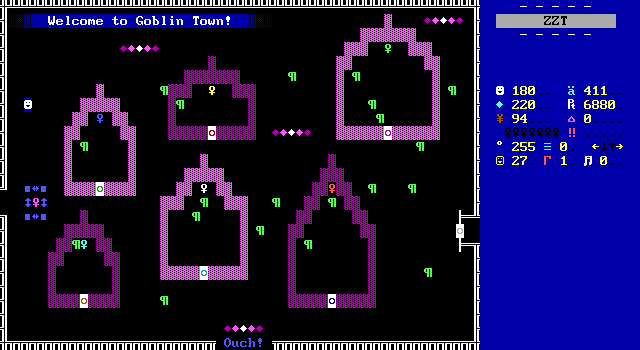
Oh yeah... Goblin Town. That's right.
I do respect how long it takes between players fighting Joven and making it here. It's easy to forget about, and then it all comes right back. Eight boards have passed between the fight and finally making it here, and I felt so guilty that I did my best not to shoot any of the goblins.
Thanks to Joven, this board makes quite the impression. The fight was new for this release, so previously it was just a get the keys and fight the enemies kind of board, whose town theme is the only thing it has going for it, though even that is only reflected in the shapes of the key chambers.
The goblins are hostile right off the bat, and behave roughly the same as lions. Their unique trait is that the throw a star when defeated, so trying to navigate the board peacefully is actually smart, even if you don't feel bad for Joven.
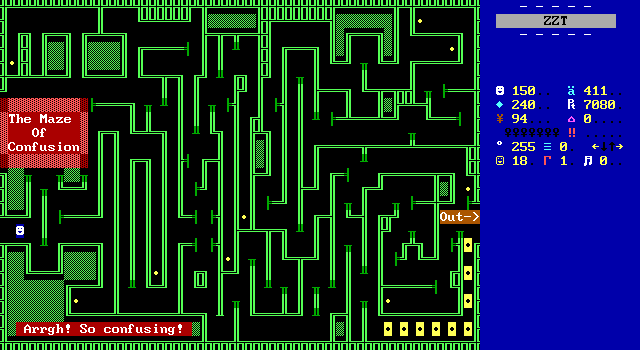
Noooooooooooooooooooooooooooooooooooooo
Maze. Nine switches. Slowly trawl across the entire board until you hit them all and can move on to something more engaging. There's just nothing to add here.
It's very green?
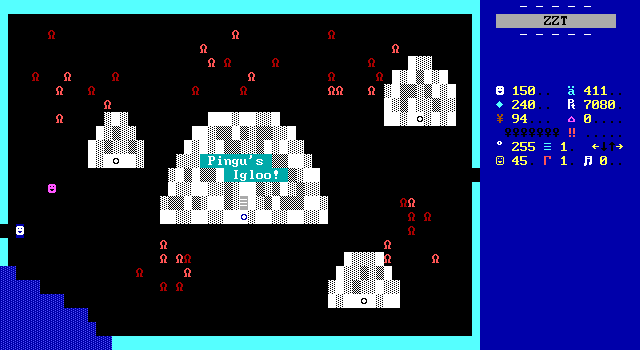
As far as the theme goes, this is a cute little board to wander onto. It's another defeat all the monsters screen, only now rather than an arbitrary guy blocking the way, there's somebody promising you the key to Pingu's igloo if you help out.
The exit forward is wide open from the start. This is Hewer making a dramatic departure for the game. For the first time players can go forward without solving the current board. They won't get far, as the next board immediately has a door that requires a keycard only Pingu can provide.
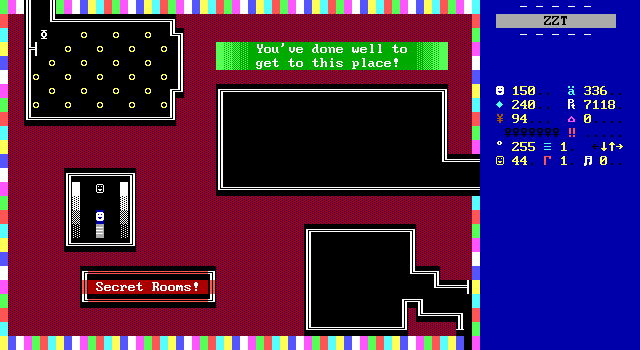
Pingu himself is actually located on the secret room board. He helpfully explains it's to make sure that you know there are secret rooms if you haven't, and to be more efficient with space. He's right!
His reward for defeating the lions is the keycard for the next board.
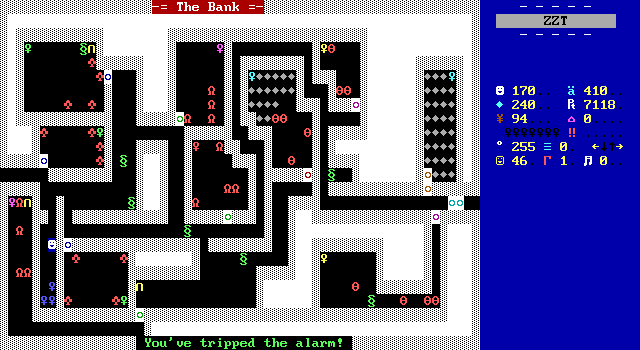
Everything between Prof. Joe's hideout and here has felt a little lackluster. As if Hewer was running out of ideas, at least for gameplay concepts. A dry spell of mazes and "I don't know, shoot some lions" boards. This bank is, well, also shooting a bunch of creatures, but if we're going that route, 90% of the game is that.
The bank does things differently though. It's open ended, with a pile of blue keys that unlock rooms with different colored keys. The extra step lets you take things in whatever order you like rather than previous boards funneling you either through a series of keys or a single pile of locks at the end.
It also features an alarm! Opening the door with the keys activates the "boys", the green dragon-y objects scattered around the board. They're another sort of crusher object that paces back and and forth. Unlike all the previous ones that for whatever reason didn't actually hurt the player, these ones will inflict damage, provided the player makes the mistake of touching one. Step carefully near them and you can get through without any issues.
The assortment of key colors and the need to use keys to reach different keys, is a little intimidating as this kind of design is also commonly used as a kind of puzzle. I don't think you can actually get yourself stuck here, but a little caution may be advised.
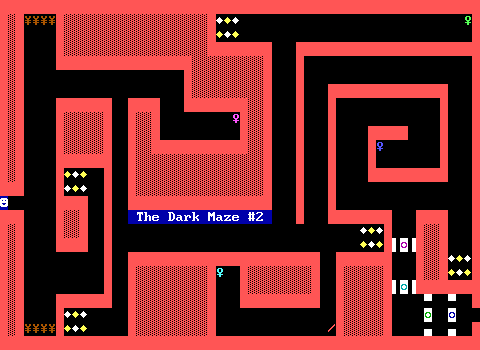
This is the game's last empty maze for me to yell at. It's dark, just like the sign says. It's also not all that complex a path, and thank goodness for that.
For something positive, there's another "light switch", calling back to the game's first joke. This time, the player refuses to even try and flip it.
This board also hides the entrance to the game's secret room, which for once isn't incredibly obvious just by looking at the board. I like the way this one is hidden. The bottom row of torches has two secret walls below the middle two. If the player heads down the middle, they have a reasonable chance of overshooting and revealing the passage.
If the player is like me, and considers that it will be faster to start at the edge of the torches and just run across them from left to right, then they won't find it! It's properly hidden without being impossible to find making for a great secret.
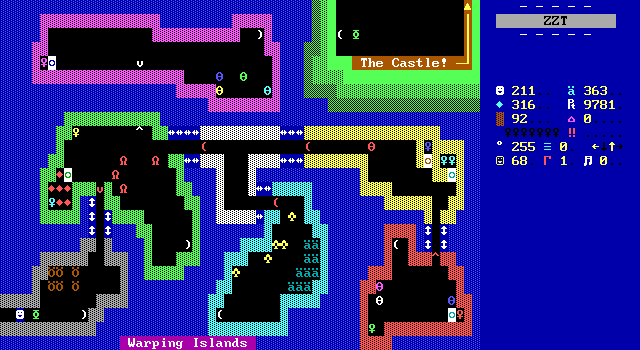
The Warping Islands are one last implementation of what I consider to be Zeebo's signature type of board. And like Pingu's igloo, it lets you poke ahead to see the next board. Here, doing so is less a novelty and more mandatory, sort of.
This board contains keys both for the doors here, as well as some that are needed to enter the upcoming castle. A scroll at the beginning warns players they should probably figure out what keys they'll need before they open too many doors, and unlike the bank, here you definitely can use a key that you need for the next board.
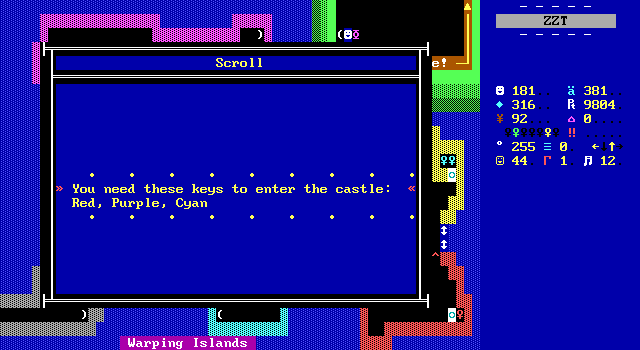
Yet you don't need to actually go to the castle as there's a scroll at the end that lists out the keys. I don't get why this one is here, as you're only three steps away from the castle when you read it in the first place.
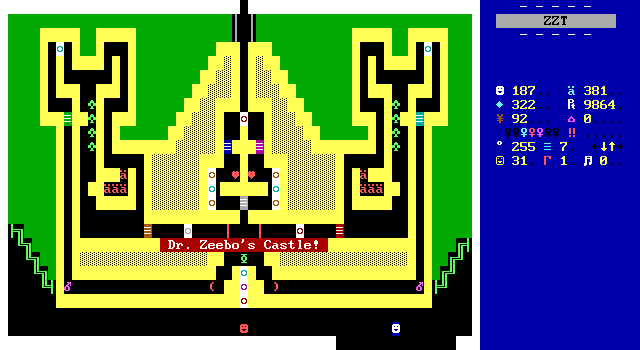
The castle itself, looks great. This board sets up the game's final boards in a way that adds a jolt of excitement to a game that's been finding itself rehashing old boards more and more often.
Your old pal Dr. Martin is waiting outside the doors with a nice little bonus of one hundred ammo. Again, I have no clue who this guy is or why he's here.
The castle itself doesn't have much in the way of threats, but that's not really the point of it. What you get here is a split for the final set of boards before Zeebo. It's a good way to encourage a second playthrough, though it's just as easy to make a second save here and peek at the other boards later.
I also really like that both paths meet up again, leading to a shared board between the two with one final split.
Less appealing is the utter lack of insight as to what the passages contain. There's a choice here sure, but it's not an informed one. Left or right is just a coin toss compared to say, puzzles or action. Any little hint, like a sign naming the boards would make the choice actually feel like it matters.
I went left which led me to...
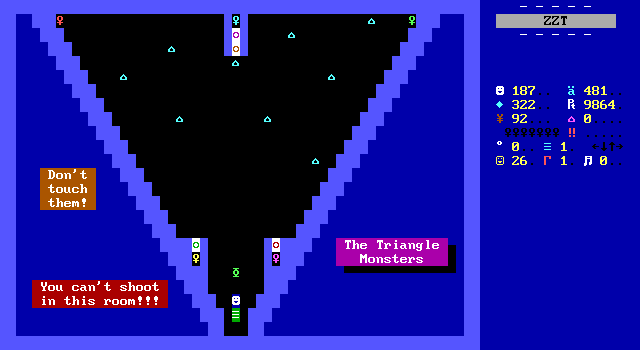
THE TRIANGLE MONSTERS. I think these guys are just goblins again with the damage slightly increased and this time no shooting allowed. The "increase" still makes them less potent than any of ZZT's own monsters, so they're not very scary.
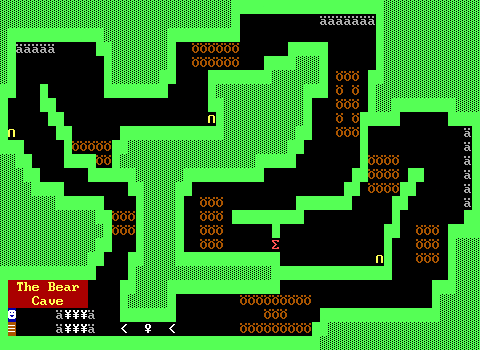
The bear cave will definitely keep you shooting, but as far as action boards go, it's still pretty easy to not take any damage with how easy it is to park in a safe spot and let the bears come to you.
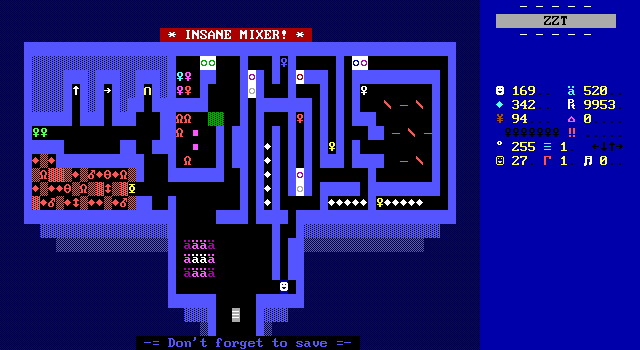
Both paths meet up in the INSANE MIXER, which is a lot more sane than Town's Mixer board. A scroll warns the player to save lest they again use the wrong key and have to restart.
Again Hewer puts his boulders in a spot where players might not realize their utility. Some careful clearing out the lion cage can let you block off the spinning guns, which need to be crossed twice to get both keys.
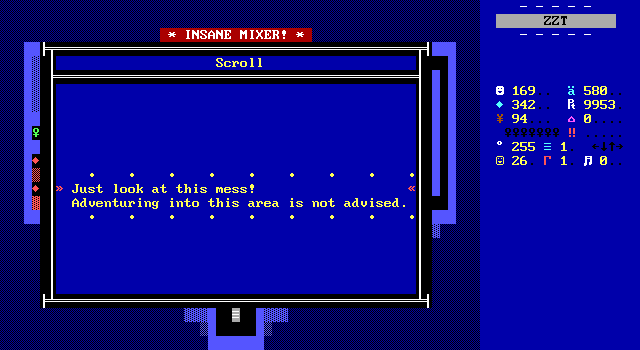

The left corner has a new addition in this version of the game, where a formerly blocked off area is instead filled with all kinds of garbage. It adds some welcome contrast to an overwhelmingly blue board.
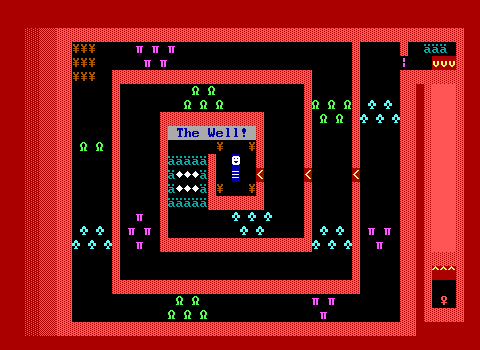
The final board on the left path is a perfect finale for the game. It's yet another creature shooting board, one where the spiral and darkness makes it well-paced and a real challenge to get through in one piece.
And it's nice enough to let you use transporters to avoid walking the now empty spiral a second time. An excellent board all around.
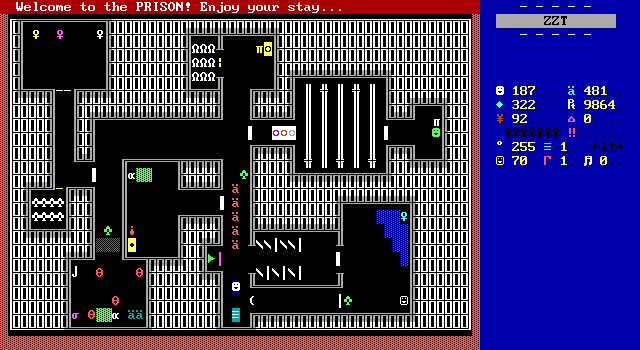
The right path starts with a pretty ambitious board in its own way, featuring a number of objects and traps that can be sprung if you're not careful with them. Pockets of locked up monsters can be set free.
However, this still comes at a cost. The entire game has managed to avoid programming errors, until here. The door to the room full of ruffians never opens when its associated tripwire is crossed, which is a real shame as it would have made a good ambush.
The moment the board is entered another error announces itself. This typo isn't an issue as it's from the chains of a prisoner to free that can still reach to being touched and shot at the default cycle instead.
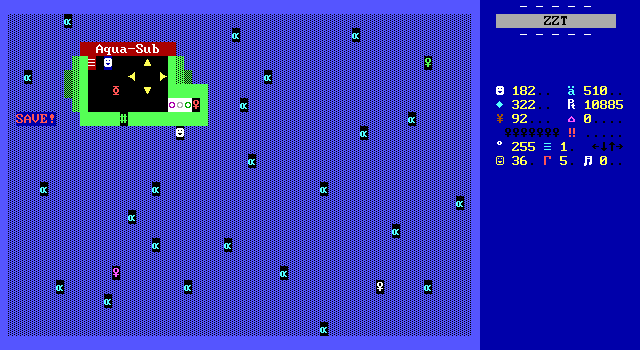
The same can't be said for the Aqua-Sub board, whose code errors prevent the board from being finished without cheating.
What you're supposed to do, is steer a robot diver through a school of fish, pushing the keys close to the the hatch, while the fish get in your way and potentially push the keys out of the way as well. Once you're ready, the hatch can be opened and the player can swim for 10 seconds before the hatch permanently shuts. Probably not actually much of a puzzle, but something new to do at least.
This version of the game breaks the board due to it replacing the arrows to control the diver with new more triangular ones. When the game got updated the objects were replaced incorrectly, and so the diver can only move south and east, which means you can only movie the keys farther from the sub.
If you want to go afk for awhile, maybe the fish can push the keys close enough, but with them moving entirely randomly, it's gonna be a long wait.
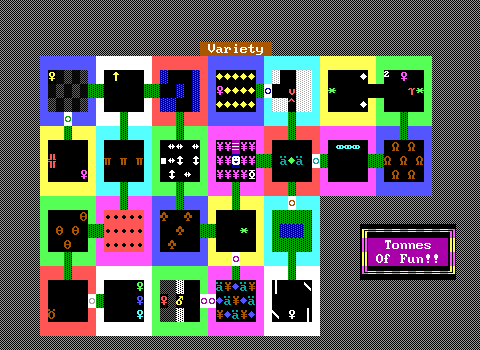
The third board for the right path looks like a lot like a scene from Sixteen Easy Pieces when the lights are turned on. It definitely lacks that game's sophisticated puzzle elements, opting instead for some tiny pockets of monsters. In practice, you mostly just shoot things from the doorway. If this was an earlier board, it would be good enough. In comparison to The Well you could be playing, this one is a lot less interesting aside from the pretty colors.
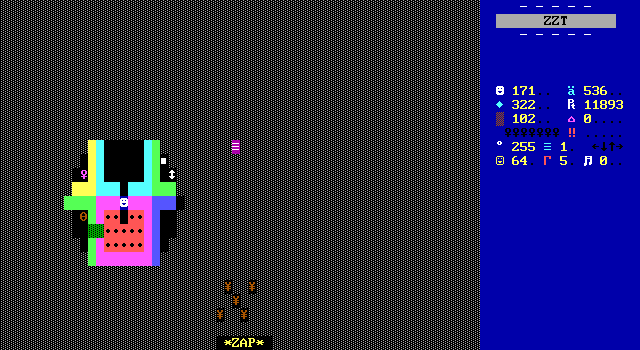
This one room is the only source of intrigue. Until you arrive and discover they're just walls that zap the player for a single point of damage and disappear. Alright.
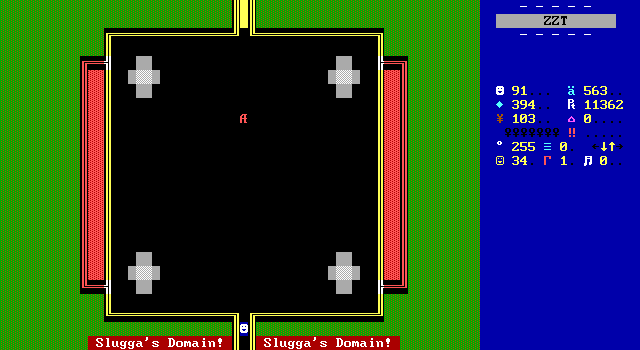
Not present in the original release, but here in both updated versions, is the game's second boss (the only boss in v2.5). Slugga the dragon isn't characterized as well as Joven was, and only raises more questions as he refers to Dr. Zeebo as his master. Zeebo seems pretty chill
The fight makes for a solid final battle. Slugga has a few phases where his speed and rate of fire increase. When he's hit, he'll retaliate with a star to discourage throwing shooting too aggressively.
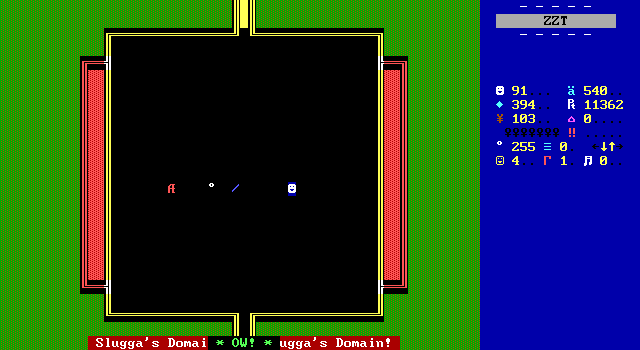
And to make the stars even more of a threat, the columns in the corners of the room are destroyed after the first phase, making it a lot harder to hide from them.
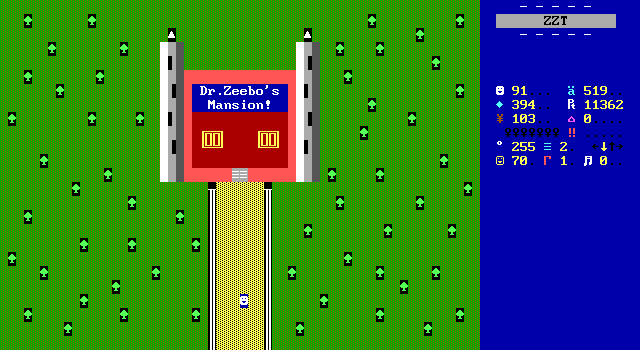
This guy's got a castle-looking mansion behind his castle! Jeeze.
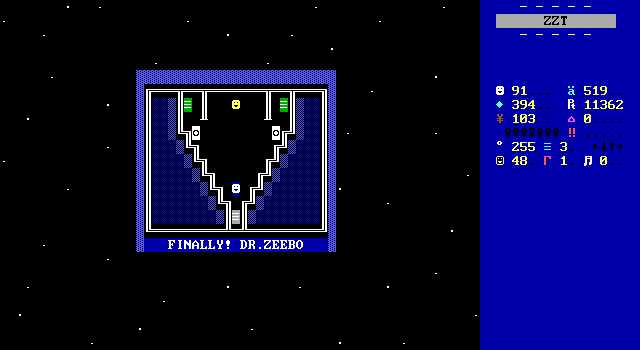
The interior is fitting for the kind of guy who knows the meaning of life. Hewer was right that the story of the game isn't particularly important, and it's only here that you suddenly realize the corner Hewer put himself in. Alright small child, code Dr. Zeebo. Tell us what the meaning of life is.
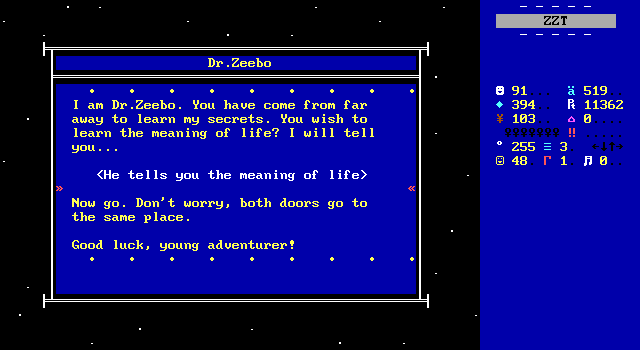
Oh. Well, lol.
I mean really, there's not gonna be a satisfying ending here. You've got a bunch of options for how to end it: a fake out, a joke answer, just saying "42" and calling it a day. Simply not telling the player anything is hardly any different.
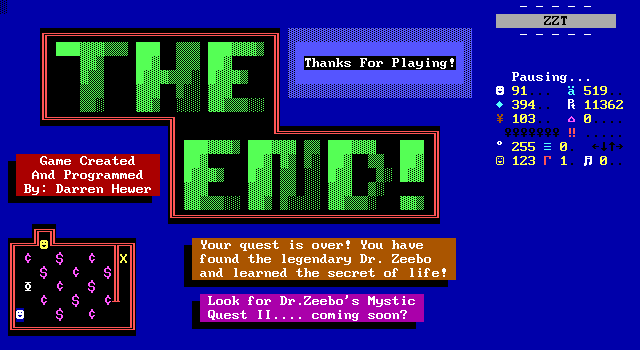
And with that, Dr. Zeebo bids players farewell. A final bonus room provides some last minute bonus points, while an object converts your left over resources as well, making the game ideal for actually trying to get a high score.
Final Thoughts
It would hard to call this one anything but a classic. Dr. Zeebo is chock-full of memorable boards that will have you remembering why you fell in love with ZZT from Town. Highlights include The Factory (of course), Slime World, The Well, and the Joven battle (with subsequent visit to Goblin Town). Right from the start Hewer demonstrates effective usage of ZZT's built-ins to construct elaborate and colorful screens that showcase ZZT in its early 90s style at its finest. For fans of traditional purple key adventures, Dr. Zeebo's Mystic Quest is a grand adventure of everything you love. A fantastic homage of a game, in an era where it's just barely late enough of a release to call it an homage to ZZT's past and not part of it to begin with. The classic style endures for good reason.
When it's not on its A-game, Zeebo still plays nicely. It may repeat a few of its ideas a bit too often, especially in the maze department, yet no matter how well Hewer succeeds at his goals of enjoyable and unique on a given screen, you can tell there's always effort put into making the best boards he can. At its most mediocre, Zeebo keeps a steady pace, giving players something to engage with, and not being afraid to try whatever ideas he can come up with. Boards like the Banana Tree and Professor Joe's Hideout take things in a different direction, and at the very least are effective ways of giving players a moment to catch their breath. The puzzle elements are sparse, perhaps a bit neglected compared to the original worlds where they were arguably the highlight, but the action succeeds just as well as any notable title from 1991. This game could effortlessly have had a place in ZZT's Revenge. It makes a great refutation of the 2000s-era community feelings that built-ins were passé and to be avoided.
The game's issues are really just its many mazes (and I'm admittedly a curmudgeon when it comes to those, perhaps normal people wouldn't mind them so much) and the unfortunate programming errors found on the right path of the final castle section. The latter can be avoided entirely by going left, which would be the more appealing road to take even if the right side was fully functional anyway. Even so, that split is another nice little benefit for the game, enticing players to give the game another go soon to see the rest of Hewer's creation.
To stretch a complaint, the game may run a little bit long. The almost entirely linear path through the game provides no indication of progress compared to the original worlds where each purple key collected is a clear milestone. The best you get here is if you find the secret entrances to the bonus room, though there's no telling if there's to be a second board later on. I think the more structured form of Town may have done this game good, and done more to encourage replays if you could play boards in different orders every time. Giving the game that structure though, would also likely have resulted in a much smaller game. This world really feels like any time Hewer had an idea for a board, he cracked open DRZEEBO.ZZT and added it in, no questions asked. The lack of story development along with Hewer's willingness to provide plenty of supplies makes the game one that easily grow and grow until he finally bothered to cut things off and publish the game.
This matches his list of releases pretty well, a steady stream of 3-4 games per year from 1991-1993 and then a gap until the original 1995 release of Dr. Zeebo up until the end of 1996 where his games stop following the mold set by the official ZZT worlds. (MegaZeux also likely stole his developing thunder, leading to the original Honor Quest that same year.) Dr. Zeebo is a sketchbook of ideas for boards that would naturally fit into ________ of ZZT, eventually linked up and released to keep those ideas from going to waste. It's a fantastic journey that you should definitely take for yourself.
